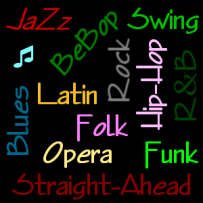Be Brave: Teach Style to Your Middle School Band Friday, January 23, 2015
by Ken Tilger, Band Education Specialist –
 Teaching solid fundamentals of playing and basic musicianship are at the core of beginning and middle school band. Obviously there is already plenty to cover within your curriculum, and if your school district’s program is well-organized, there is a certain skill set and level of musicianship your students should reach before moving on to high school band. Throw in programming for a Christmas/winter concert and adjudicated performance/band trip, and your year is already really full. While all of these things are worthwhile, why not step outside the box a little bit and throw in a piece to teach style.
Teaching solid fundamentals of playing and basic musicianship are at the core of beginning and middle school band. Obviously there is already plenty to cover within your curriculum, and if your school district’s program is well-organized, there is a certain skill set and level of musicianship your students should reach before moving on to high school band. Throw in programming for a Christmas/winter concert and adjudicated performance/band trip, and your year is already really full. While all of these things are worthwhile, why not step outside the box a little bit and throw in a piece to teach style.
While I know there are reasons both musical and practical not to do this, there are a number of great reasons to do it, as well. First, it will provide some interesting variety to your concert programming. In addition to the usual concert overture/concert piece, lyrical selection, march, and programmatic piece, an authentic Latin or other “world” style, tango, waltz, or show-style piece will add some fun, flair, and may well be the highlight of your performance. Secondly, it will greatly enhance your group’s musicianship. Different styles place different reading and interpretation demands on players, and the more styles a musician encounters, the more versatile they become. As a big band saxophonist that came up through  school music programs, I feel like we all learn to play legato really well. This is great for developing tone and for classical playing and study, but limits our scope for interpreting notation. On most gigs, styles change from one tune to the next and most students really only encounter a variety of styles through jazz ensemble. Of course this is limited to those who participate, and if the programming is really solid. It’s never too early to plant seeds of versatility, and your overall program will greatly benefit from the variety of skills and depth of understanding your students gain. Lastly, exposure to a variety of styles will broaden your students’ view of music overall and its place in history.
school music programs, I feel like we all learn to play legato really well. This is great for developing tone and for classical playing and study, but limits our scope for interpreting notation. On most gigs, styles change from one tune to the next and most students really only encounter a variety of styles through jazz ensemble. Of course this is limited to those who participate, and if the programming is really solid. It’s never too early to plant seeds of versatility, and your overall program will greatly benefit from the variety of skills and depth of understanding your students gain. Lastly, exposure to a variety of styles will broaden your students’ view of music overall and its place in history.
Below I have featured two of my favorite new pieces to teach style. Keep in mind that if they are cheesy, not authentic, or merely dressed up with percussion toys, they don’t make the cut. As when choosing pieces for jazz band, I recommend selecting a piece that’s about 1 grade level easier than your ensemble typically plays. This will allow your students to easily nail down notes and rhythms so you can focus on interpretation, articulation, and nuance. I have also listed a few more new titles for middle school band that capture their respective styles perfectly. We even think enough of them that they’re all in our middle school band promotion! If you’re considering teaching style this year, these are all great starting places. Go ahead. Be brave. Your students and audience will thank you.
 Camino del Sol by Steve Hodges Grade 2.5
Camino del Sol by Steve Hodges Grade 2.5
Camino del Sol is a solid, fun to play Latin selection that will greatly develop your ensemble’s technique, rhythmic interpretation, and cut-time reading. Underpinned by a characteristic, syncopated bass ostinato and Latin percussion, a light melody passes throughout the band complete with full-bar, 8th note pick-ups and hits in all the right places. As always, articulation, note length (space!), and interpreting figures sets the style. The biggest challenges will be learning to hear & feel the figures in 2 (don’t over-count), and keeping the slurred melody from being too legato.
 Zombie Tango by James Meredith Grade 2
Zombie Tango by James Meredith Grade 2
Teach beyond notes and rhythms with this fantastic tango. Sure it’s spooky per the title, but more important is its authenticity – bringing any cultural or dance style to life requires appropriate accents, note lengths, and interpretation of figures. More than just dressing it up with percussion instruments, Zombie Tango features characteristic elements in spades (including a bridge)! Aside from being a fun programming change-up, learning to interpret this style from the page will work wonders for reading articulation and rhythmic figures. We couldn’t recommend this piece more!
Stanton’s also recommends: African Alleluia, Klezmer Clarinets, and Three Brazilian Folksongs
About the Author:
Ken is a former band director, and has been with Stanton’s since 2004. He is excited to have finally seen Jeff Coffin and the Mu’tet live! He also enjoys comic books, all things Pittsburgh (Let’s Go Pens!), and plays saxophone with Swing’s the Thing Big Band.